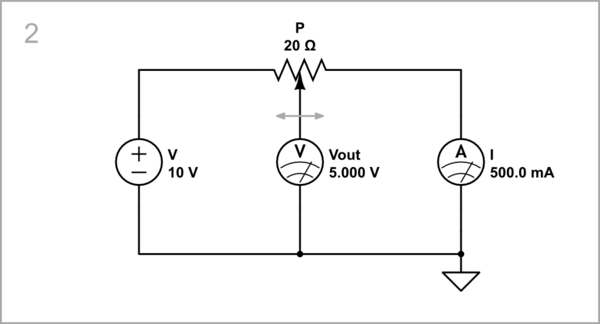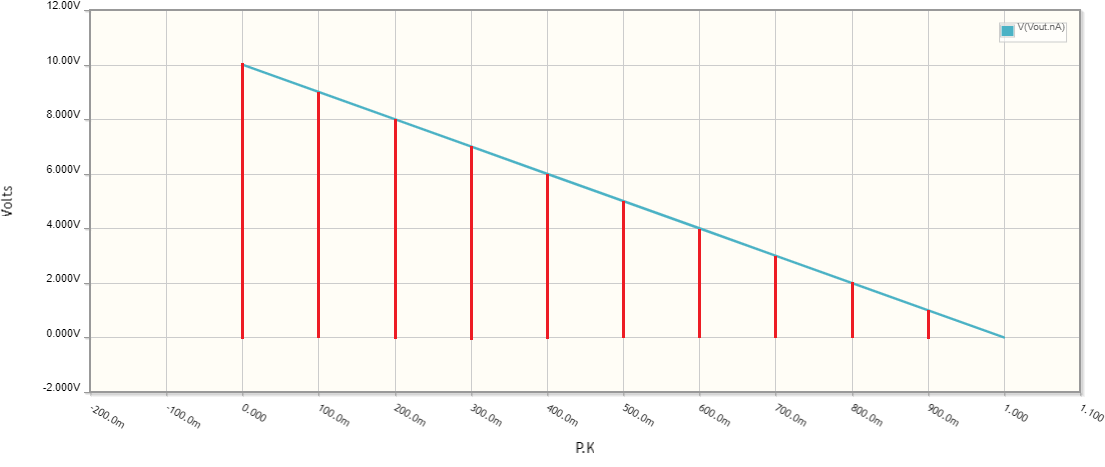1-resistor circuit
Why does the full voltage drop in the first 10 ohm resistor and why does it drop fully before it reaches the negative of the source battery?
The only way to find out why is to "step into" the resistor and watch how the voltage (or more accurately, the potential) changes from its highest value (10 V) to its lowest value (0 V). We can do this by literally opening the resistor and starting to investigate its resistive layer with the red probe of the voltmeter. But we can do it less "brutally" by connecting a potentiometer to the voltage source instead of resistor(s) and connecting the voltmeter's probe to its wiper. And we can do it even more elegantly with the help of CircuitLab.
In such a sophisticated experiment, we can "move" the wiper from leftmost to rightmost position simply by changing the potentimeter's transfer ratio K from 0 to 1 (0.5 shown in the schematic below) in the potentiometer's parameters window.
Also, we can set the overall potentiometer resistance R (initially 10 Ω). According to Ohm's law, the current is 1 A.

simulate this circuit – Schematic created using CircuitLab
We can "move" the wiper even automatically by sweeping K with the help of the DC Sweep Simulation. Each of the local voltages is presented by a section (in red) with proportional height. We can name this set of "voltage bars" by the name "voltage diagram"voltage diagram.
Thus we can see in the graph below how the voltage linearly decreases from 10 V to 0 when the wiper "moves" from left to right.
2-resistor circuit
Now open again the P parameters window and set R = 20 Ω. By setting K = 0.5, we "move" the wiper to the middle position. Figuratively speaking, it splits the resistor into two 10 Ω resistors.
As you can see, the only difference is the two times lower current (500 mA).

As you can see, the voltage diagram is the same.




